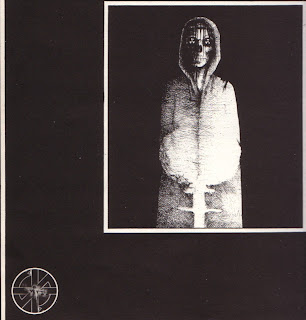
Coccinelle made her debut into show business in 1953 as a trangendered showgirl at the Chez Madame Arthur; later she became a permanent fixture at Le Carrousel de Paris and performed with other well-known performers. In 1958, she traveled to Casablanca to undergo vaginoplasty.


When she returned to Paris, she immediately became a media sensation and rubbed elbows with the likes of Josephine Baker and Marlene Dietrich. Her brush with fame resulted in a few film roles in the 1960s: Los Viciosos and Dias De Viejo Color.
Liner notes included below:

Once again, another rough translation:
Born in Paris as Jacques Dufresnoy in 1933 between la Porte Saint-Martin and la Porte Saint-Denis, just like Mistinguett.
Jacques chose studies in the field of communications, like so many others did at that time. At one point, Jacques had learned that the ladybug used in metaphor as an expression of femininity and this seemed to resonate within.
In 1947, Jacques worked as a telephone operator for the l'Automobile Club de France.
Jacques reflected on this quietly until the day the event occurred.
Days later, Jacques decided that the ladybug was to be the chosen familiar- the representation of the chosen transformation that was to occur. It was at this point that the ladybug made its entrance into Jacques' life and revealed itself to the world.
He went to work for the world renowned hairdresser, Antonio, in 1948. Jacques, the young lad, worked as a coiffeur there for two years.
Spending as much time as Jacques did with the older men who worked in the place, brought him into contact with the idea "young people can not have fun as we once had." This proved to be false. The French traditionally regard this idea with disfavor. In 1950, Jacques had the idea of becoming an entertainer: to be the Queen of Queens.
This was quite a revelation for the young man. There was an irresistable calling, as if Destiny was tapping him on the shoulder; he disguised himself as a young woman one day and it felt very natural to do so.
That evening, Jacques went down to the Carrousel and sang "A Small Satin End" and met with such success that he received immediate stardom.
Then, he chose to see Mrs Arthur, who was a prominent transvestite performer de la Butte Mont-Martre.
Thus Ladybug was born! Her name made Paris turn its head and the rest of the world was forced to listen. The stranger was welcome with open, adoring arms. She was an expert in cultivating a talent that generated the warmest reception.
Ladybug had the uncanny ability to appeal to the international elite and this made her the most popular transvestite performer in the world, springing into the limelight with a mighty force.
At this time, Ladybug is the propeller on the high-speed motor engine of the Carrousel. Few patrons of this establishment suspect that under the chest of this dazzling singer beats the heart of the meek telephone operator with the A.C.F.
Many spectators would be surprised if they learned that this was a permanent employee of Antonio's. If they knew the truth of who she was, they would most likely not be so enarmored of her.
Ladybug is currently at a turning point in her career. She has decided after 23 long years of hesitation, to carry out the dictates of nature and will transform to her true form. She will become the new "It Girl."
Modern-day medicine will help steer her into the direction that the Carrousel helped spin her in so many days past. Doctor Claoue provides the necessary treatments in an attempt to cull the definitive transformation while awaiting the operation that will make Jacques into a fabulous, real-life Miss Ladybug.
Ladybug leads a quiet and tranquil life, dedicated to her work and meaningful friendships. When not performing, her hobby is designing dresses and outfits.
Soon, she will put away the life of a mere transvestite and embrace the elegance that is only known by woman. Jacques will have lost his "sex" but a new life will have been borne.
Ladybug will have died. Long live Mademoiselle Coccinelle!
Robert Beauvais.
That's probably as good a translation as you're gonna get at this stage... If anyone can do better... please... by all means... provide a translation in the comments!
Here she is.......
COCCINELLE!

 They ended up connecting with the Rock Against Reagan tour, a tour of hardcore bands proselytizing against the Reagan administration and managed by the Yippies. This led the band to record a track for (you guessed it!) the famed P.E.A.C.E. compilation released by R Radical Records.
They ended up connecting with the Rock Against Reagan tour, a tour of hardcore bands proselytizing against the Reagan administration and managed by the Yippies. This led the band to record a track for (you guessed it!) the famed P.E.A.C.E. compilation released by R Radical Records. 















































